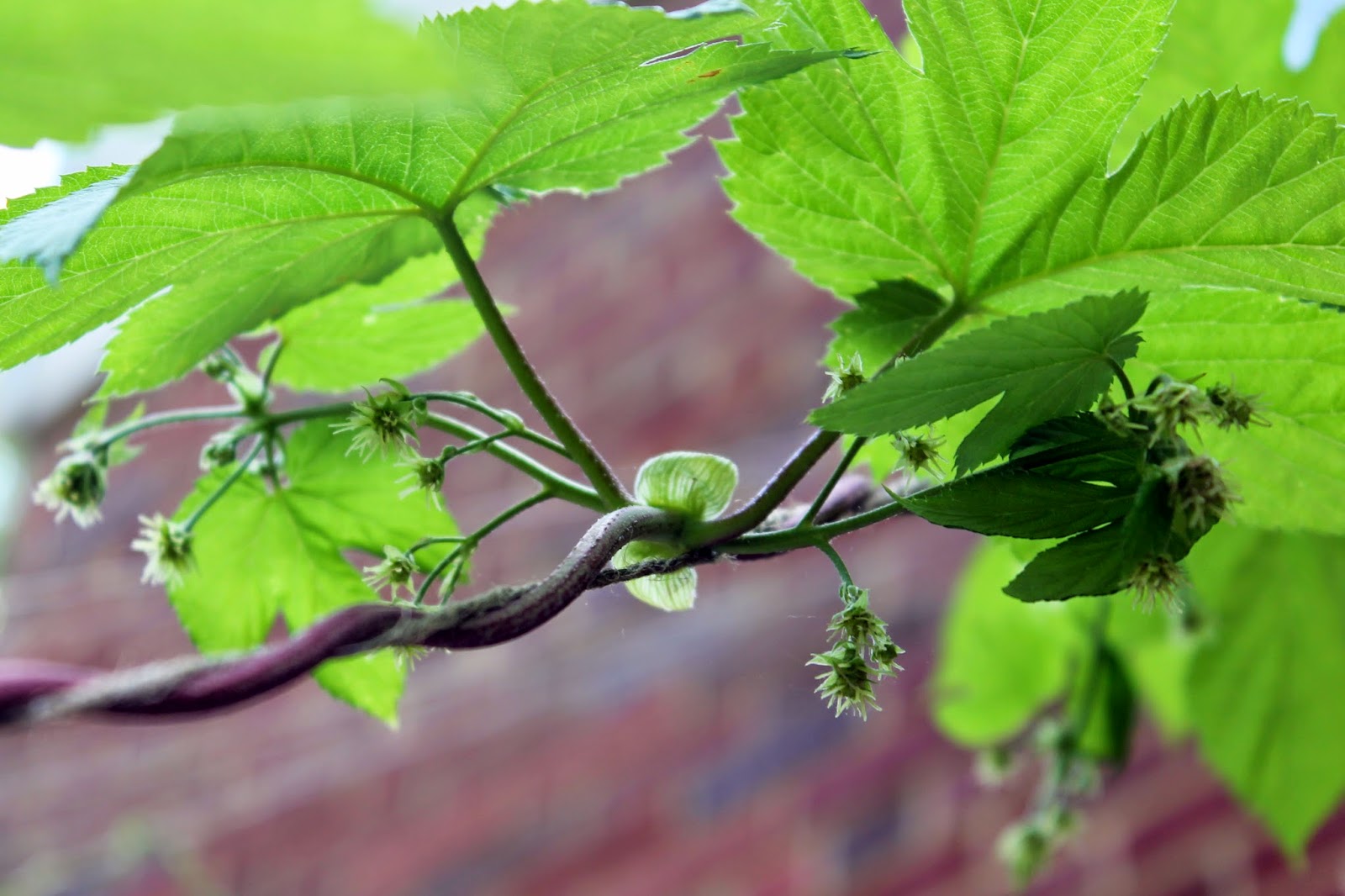Harvest time has come and gone for all three of my plants. Fortunes were somewhat switched around this year. The Cascade did not seem to have a very happy year, at least as far as producing cones is concerned. I actually picked its cones some time ago as it had stopped producing more and I hoped that it would put some energy into making new ones. This is all I got:
No more were forthcoming. The Willamette on the other hand did much better than last year. Not difficult to do as I only got three cones from it. This year, despite the plant looking decidedly unhappy, I ended up getting more cones than the Cascade. This is what they looked like prior to picking:
They may have been picked slightly early but I was concerned that I was losing some due to heavy rains. I previously found this when I came out to check on them:
I figured it would be better to harvest them early than lose more to unpredictable weather. This is what I ended up getting:
I have read that the ratio of wet hops needed per dry hop weight is ~5:1, so this is roughly equivalent to an ounce of dried hops. Not exactly breaking the bank.
The Columbus on the other hand did much better than the other two and slightly better than last year:
The year I got and extra 6oz compared to last year's Columbus harvest. What with this and the much larger quantity of Willamette, I'm thinking that there should be enough to hop an entire brew with just my home grown hops, a mouth watering prospect.
On a bonus note, I recently went to visit a cousin in Maine. Turns out he had some long neglected hops growing round his patio:
Very much in need of some care and attention. As he does nothing with them, he was happy for me to pick what I wanted and take them with me. Some cones were in pretty good shape:
Others, not so much:
In the end this is what I managed to get home:
They may not be the best looking hops but 10oz is better than a kick in the teeth. I may well try and use these to supplement another recipe with commercially dried hops.
Overall, it's been a productive year. The Cascade seemed to be much less happy but the Willamette seems to have made up for it by perking up, at least in terms of cone production. The rest of the plant seems to be the other way around, with the Willamette looking less healthy compared to the Cascade. Perhaps the Cascade is just a bit fussier about having everything just so before it's prepared to commit much energy into cone production. There are no plans for us to move again next year so I have high hopes that production will only get bigger and better. I may well briefly post when I use them but until then they will sit in the freezer until they are unceremoniously dumped into boiling wort.

















































